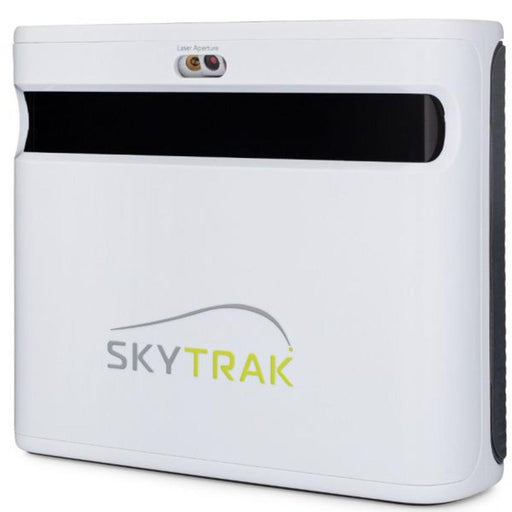
A Guide to Creating a Golf Simulator Business Plan
As the popularity of golf continues to surge, so does the demand for innovative and accessible ways to enjoy the game. Enter the world of golf simulators—a dynamic blend of technology and tradition that brings the golf course experience indoors. If you're passionate about golf and dream of turning that passion into a thriving business, creating a comprehensive golf simulator business plan is your first swing towards success. In this blog post, we'll guide you through the essential steps of crafting a business plan that will set the course for your golf simulator venture.
Executive Summary
- Vision and Mission:
Define the overarching vision for your golf simulator business. What do you aim to achieve? Whether it's providing a state-of-the-art golfing experience, fostering a sense of community, or offering a unique entertainment option, your mission should encapsulate the essence of your business.
- Business Objectives:
Outline specific and measurable objectives for your golf simulator business. These may include financial targets, customer satisfaction goals, and expansion plans. Clearly articulate the milestones you aim to reach, creating a roadmap for your business's growth.
Market Analysis
- Industry Overview:
Provide a detailed overview of the golf simulator industry. Analyze current trends, growth projections, and the competitive landscape. Understanding the market dynamics will help you position your business effectively and identify opportunities for differentiation.
- Target Audience:
Define your target audience. Consider demographics, psychographics, and the preferences of your potential customers. Understanding your audience will guide marketing strategies and influence decisions related to simulator features, pricing, and additional services.
- Competitor Analysis:
Conduct a thorough analysis of your competitors. Identify their strengths, weaknesses, and unique selling propositions. Assessing the competitive landscape will enable you to carve out a niche for your golf simulator business and develop strategies for differentiation.
Business Model and Services
- Business Model:
Clearly outline your business model. Will you operate as a standalone golf simulator facility, partner with existing golf-related businesses, or offer mobile services? Define how your business will generate revenue, whether through hourly rentals, memberships, or additional services.
- Simulator Selection and Features:
Detail the selection of simulators you plan to offer. Consider factors such as accuracy, realism, and variety of courses. Highlight any additional features or technologies, such as virtual tournaments, multiplayer options, or customizations, that will set your simulators apart.
- Ancillary Services:
Explore opportunities for additional services to complement your core offerings. This may include golf lessons, club fittings, pro shop services, or even a café/bar. Ancillary services can enhance the overall customer experience and contribute to revenue diversification.
Marketing and Sales Strategy
- Branding and Positioning:
Define your brand identity and positioning strategy. Create a brand that resonates with your target audience and communicates the unique value your golf simulator business brings. Consider themes, logos, and messaging that align with your mission.
- Online Presence:
Establish a strong online presence through a professional website and active social media profiles. Utilize digital marketing strategies, including search engine optimization (SEO) and social media marketing, to reach and engage with potential customers.
- Partnerships and Collaborations:
Explore partnerships with golf-related businesses, local sports clubs, or event organizers. Collaborations can broaden your reach and enhance your credibility within the community. Consider cross-promotions or joint events to attract a diverse audience.
Operations Plan
- Location Selection:
Choose a strategic location for your golf simulator business. Consider foot traffic, accessibility, and the demographics of the surrounding area. Ensure that the space can accommodate the installation of simulators and offers a comfortable environment for customers.
- Facility Layout and Design:
Design the layout of your facility to optimize space utilization and provide an enjoyable experience for customers. Consider factors such as simulator spacing, seating arrangements, and the overall ambiance. A well-designed space contributes to customer satisfaction.
- Equipment and Maintenance:
Specify the equipment required for your golf simulator business, including simulators, screens, projectors, and any additional technology. Outline a maintenance schedule to ensure that all equipment remains in optimal condition for accurate and reliable performance.
Financial Projections
- Start-up Costs:
Detail the initial investment required to launch your golf simulator business. This may include simulator purchases, facility lease or construction costs, interior design, marketing expenses, and operational costs for the first few months.
- Revenue Projections:
Develop realistic revenue projections based on factors such as pricing, expected utilization rates, and ancillary service income. Consider different scenarios and growth trajectories to create a comprehensive financial forecast for the next three to five years.
- Funding Requirements:
Identify your funding requirements by subtracting your available capital from the total start-up costs. Determine whether you'll seek funding from investors, loans, or other sources. Clearly articulate how the funds will be utilized to achieve your business objectives.
Risk Analysis and Mitigation
- Identify Risks:
Evaluate potential risks that could impact your golf simulator business. These may include economic downturns, technological issues, or changes in consumer preferences. Identifying risks allows you to proactively develop strategies for mitigation.
- Mitigation Strategies:
Develop specific strategies to mitigate identified risks. This may involve diversifying revenue streams, implementing contingency plans for technical issues, or staying agile in response to market shifts. Proactive risk management enhances the resilience of your business.
Implementation Timeline
- Milestones:
Create a timeline outlining key milestones for your golf simulator business. This may include the completion of facility construction, simulator installation, marketing campaigns, and the launch of additional services. A clear timeline provides a roadmap for effective implementation.
- Responsiveness to Feedback:
Incorporate mechanisms for collecting and responding to customer feedback. Establish regular feedback loops to assess customer satisfaction, identify areas for improvement, and adapt your business strategies accordingly.
Crafting Success on the Virtual Fairway:
Crafting a golf simulator business plan is not just a preliminary exercise; it's a dynamic roadmap that guides your venture toward success. By thoroughly exploring the market, outlining your unique offerings, and planning for potential challenges, you position your business for growth and sustainability. As you embark on this exciting journey, remember that the virtual fairway is yours to conquer—so swing for the fences and make your golf simulator business a hole-in-one.

Have Questions About Golf Simulators?
Our expert team is here to help you find the perfect golf simulator for your needs.
Featured products
-
SkyTrak+
Original price $2,995.00 - Original price $3,145.00Original price$2,995.00 - $3,145.00$2,995.00 - $3,145.00Current price $2,995.00Introducing the SkyTrak+ Launch Monitor: Unmatched Accuracy and Advanced Features Experience a new level of precision and innovation with the SkyTr...
View full details -
ProTee Majestic Simulator Package
Original price $9,618.00 - Original price $13,848.00Original price$9,618.00 - $13,848.00$9,618.00 - $13,848.00Current price $9,618.00ProTee Majestic Golf Simulator Package: Elevate Your Indoor Golf Experience Transform your home or business into a golfer’s dream with the ProTee M...
View full details -
Eagle Golf Mat
Original price $370.00 - Original price $1,130.00Original price $370.00$370.00$370.00 - $1,130.00Current price $370.00Introducing the Eagle Golf Mat: The Ultimate Golf Experience Are you passionate about golf and demand nothing but the very best in your practice eq...
View full details -
Retractable HomeCourse® Golf ProScreen 180
Original price $2,299.00Original price $2,299.00 - Original price $2,299.00Original price $2,299.00Current price $1,999.00$1,999.00 - $1,999.00Current price $1,999.00HomeCourse® Golf ProScreen 180 HomeCourse® Golf ProScreen 180 is a retractable golf screen and enclosure. HomeCourse® Golf ProScreen 180's ballisti...
View full details -
The Augusta V2 4'x12' 2 Cups
Original price $399.00Original price $399.00 - Original price $399.00Original price $399.00Current price $329.00$329.00 - $329.00Current price $329.00The Augusta is one of Big Moss’ traditional models. It offers unmatched versatility for teaching and year round practice. Make a long-term investme...
View full details





